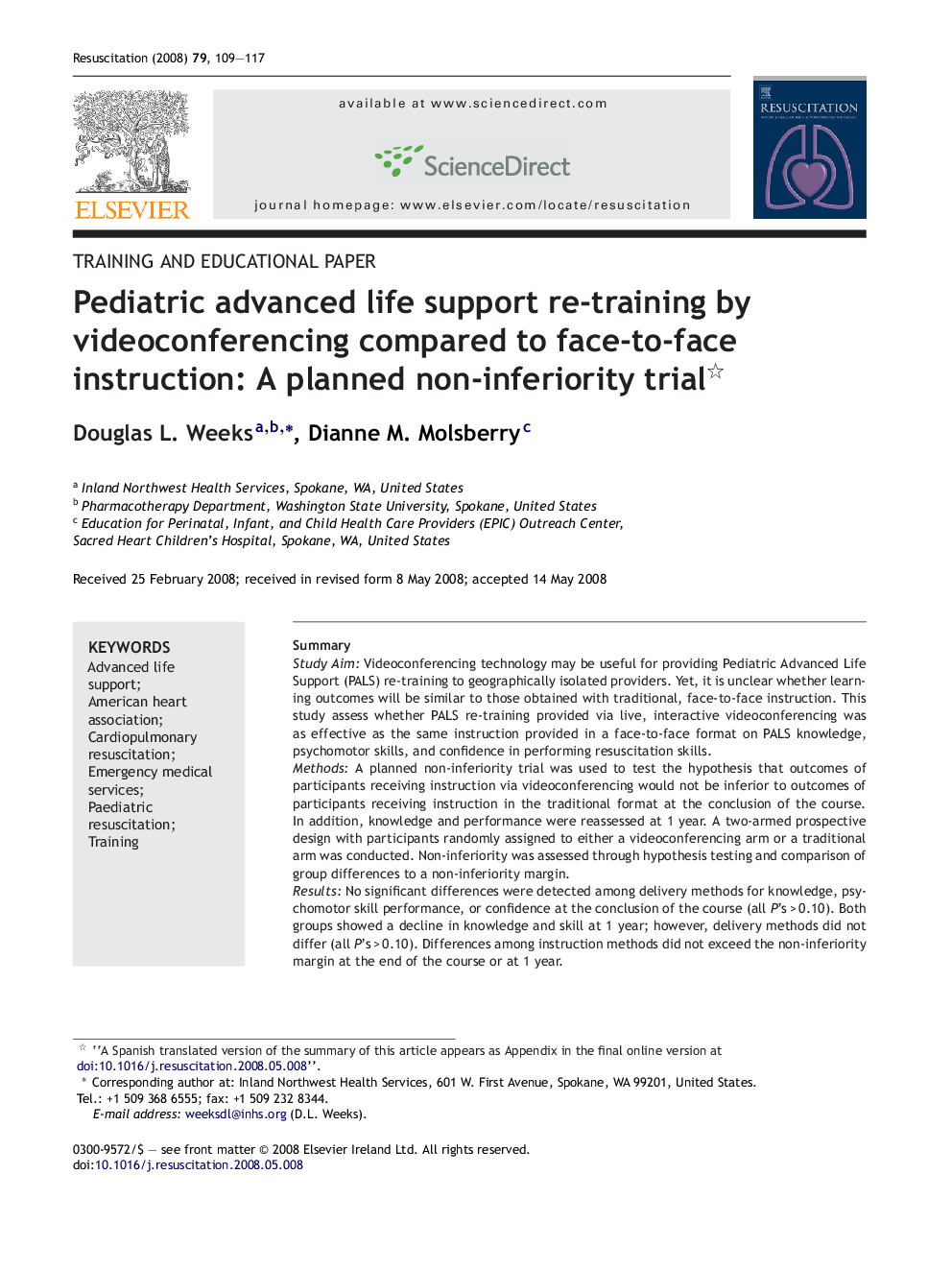| Article ID | Journal | Published Year | Pages | File Type |
|---|---|---|---|---|
| 3009552 | Resuscitation | 2008 | 9 Pages |
SummaryStudy AimVideoconferencing technology may be useful for providing Pediatric Advanced Life Support (PALS) re-training to geographically isolated providers. Yet, it is unclear whether learning outcomes will be similar to those obtained with traditional, face-to-face instruction. This study assess whether PALS re-training provided via live, interactive videoconferencing was as effective as the same instruction provided in a face-to-face format on PALS knowledge, psychomotor skills, and confidence in performing resuscitation skills.MethodsA planned non-inferiority trial was used to test the hypothesis that outcomes of participants receiving instruction via videoconferencing would not be inferior to outcomes of participants receiving instruction in the traditional format at the conclusion of the course. In addition, knowledge and performance were reassessed at 1 year. A two-armed prospective design with participants randomly assigned to either a videoconferencing arm or a traditional arm was conducted. Non-inferiority was assessed through hypothesis testing and comparison of group differences to a non-inferiority margin.ResultsNo significant differences were detected among delivery methods for knowledge, psychomotor skill performance, or confidence at the conclusion of the course (all P's > 0.10). Both groups showed a decline in knowledge and skill at 1 year; however, delivery methods did not differ (all P's > 0.10). Differences among instruction methods did not exceed the non-inferiority margin at the end of the course or at 1 year.ConclusionsFor outcomes assessed following instruction and at 1 year, videoconferencing was not inferior to face-to-face delivery. These findings hold promise for use of videoconferencing to deliver PALS re-training to geographically isolated providers.
